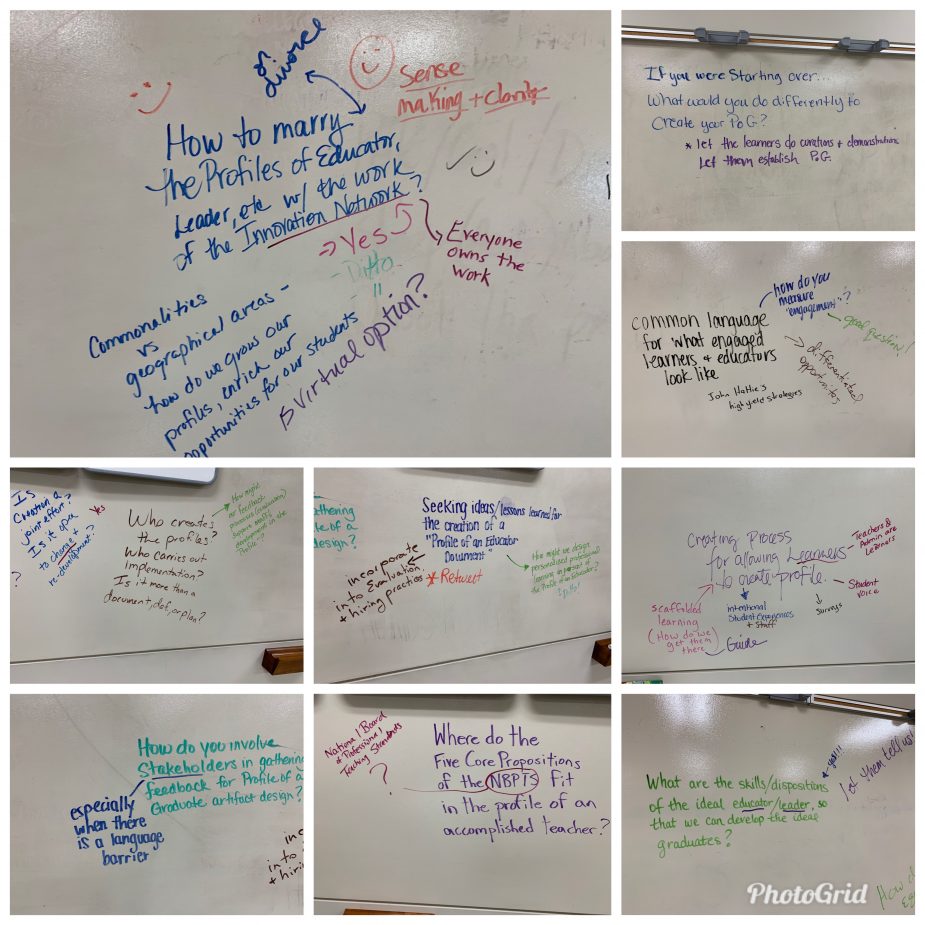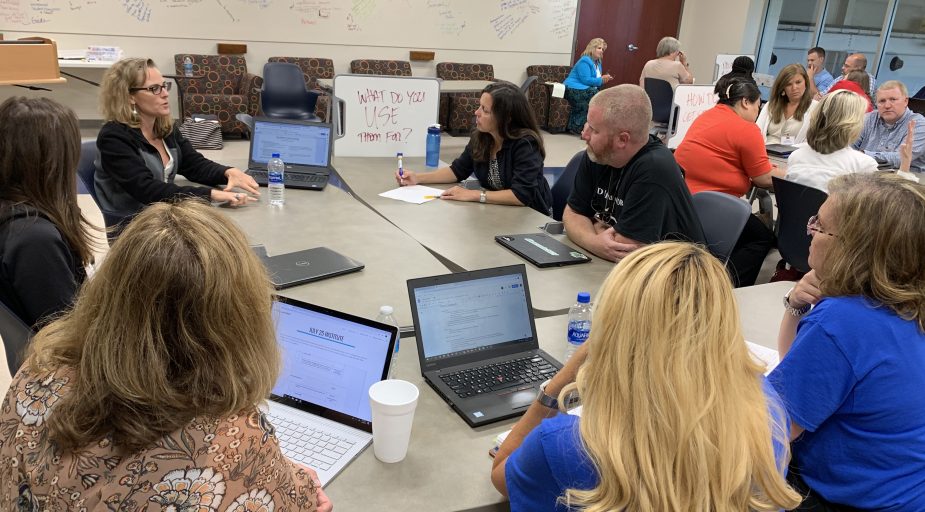As referenced on the Virginia Department of Education website, “The Profile of a Virginia Graduate describes the knowledge, skills, experiences, and attributes that students must attain to be successful in college and/or the work force and to be ‘life ready.'”
The newly revamped graduation requirements go into more depth on the subject:
A student meeting the Profile of a Virginia Graduate has achieved the commonwealth’s high academic standards and graduates with workplace skills, a sense of community and civic responsibility and a career plan aligned with his or her interests and experiences.
In preparing students to meet the Profile of a Virginia Graduate, schools are required to ensure that students develop the following competencies known as the “Five C’s”:
- Critical thinking
- Creative thinking
- Communication
- Collaboration
- Citizenship
As means toward accomplishing this goal, districts across the state are engaging in the process of defining their local targets to life readiness. Among them, participants of the first cohort of the Virginia Is For Learners Innovation Network (VaLIN) have united around the charge to take small steps within their districts to actualize this transformation.
From What to How
During the July 25th convening of the Innovation Network in Martinsville, Virginia, a cross-sectional community of team members from upwards of two dozen school districts joined together to learn from each other’s approaches to profile implementation. Their initial “Need to Knows” as articulated during the opening Chalk Talk sparked a wide array of potential questions for the group’s exploration:

In many ways, these questions could be summarized as this: Once we define our local language and associated resources to describe the profile of a graduate, how might we use it?
One team explored that area of focus in depth. Representing communities from a diverse cross-section of the state (including Buchanan, Franklin, Greene, Halifax, Newport News, Orange, and Powhatan), these leaders shared with each other the strategies they have used to implement their profiles as well as the successes and challenges they have experienced along the way.

This opportunity for networking allowed districts to learn from each other’s practice while also inviting opportunities for “outside eyes” to offer feedback on their approaches. As an example, leaders from Powhatan County shared their emerging planning guide as a key component of their DL421 initiative which led to a rich discussion on how such a tool could inspire educators in search of a means to put the profile into practice.
Through their discussion, the team unpacked their shared stories around how they have used their district’s learner profile in the following ways:
- Using the profile to drive professional learning: Districts have embedded the profile within professional development experiences for teachers to help the “sense-making” of the profile and how it can inform their work. In addition, the associated resources have helped to inform the coaching process with teachers to include feedback, lesson planning, and reflection. This allows teachers the ability to set targeted goals for growth around certain aspects of the profile.
- Using the profile for curriculum development and alignment: Organically developed profiles provide the ability for the division to align instruction, PD, and deeper learning work in a way focuses the work of everyone included. Throughout their design process, they adopt that which fits the goals while adjusting or abandoning that which doesn’t.
- Using the profile for district alignment and decision making: Profiles allow for clear communication to all stakeholders about the why, what, and how of the district’s overall approach to teaching and learning, providing clarity to stakeholders on why certain shifts are such a key focus. Additionally, profiles can be used to inform decisions from instructional priorities to budgets and personnel.
The network also dove into additional queries around use of the profile, including: “How do we use the Profile for growth and feedback?” “How do you engage the community around the development and implementation of the profile?” “How do you get students involved in the development of the profiles- not only of a learner but also of an educator and a leader?” This collection of their explorations offers a summary of their learning alongside their contact information to facilitate additional networking in the future.
From a Group to a Network
These opportunities for cross-district collaboration driven by collective curiosity not only led to a wide array of strategies for employing their respective profiles, but also to a newly formed community of learners with whom to do so. United by a common goal, these districts leaders recognize that they are not alone in taking these daunting steps. Through their engagement in the Innovation Network, they now have a team across the state who is willing to help them put the proverbial pen to paper, as well as inspire them to put that proverbial paper into practice.
When you find a friend who loves a good pen AND gives you one to take home ❤️ #VaLIN https://t.co/a9f3F4Q8Y9">pic.twitter.com/a9f3F4Q8Y9
— Shameka N. Gerald (@Shameka_Gerald) July 25, 2019

